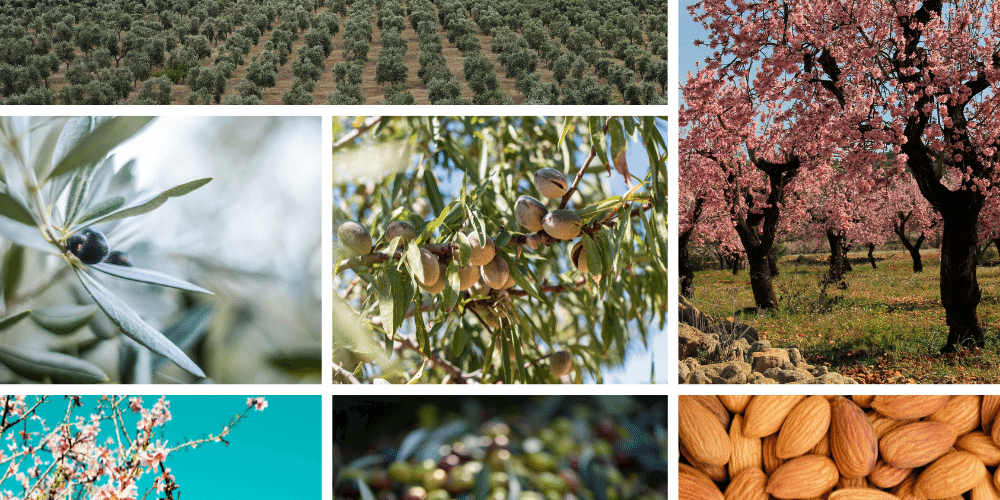The importance of postharvest treatments in olive and almond groves
By Mauro Bernal and Anna Botta
Almond Tree (Prunus dulcis L.)
Once the almond is harvested, we must not neglect the almond tree since the practices carried out in post-harvest will have in our favour better flowering and future setting in the following campaign. Both through fertigation and foliar treatments we will be able to re-establish to a large extent the reserves that the budding crop will demand.
At Bioiberica we recommend the contributions of postharvest nutritional elements such as N, P and Zn in Almond trees, which are of great importance, to be combined with Terra-Sorb® radicular so that they can be rapidly translocated, increasing the efficiency of the fertilizer and avoiding nutrient losses in this process. It is also important to highlight that Nitrogen has a fundamental role since it accumulates in the roots, branches and trunk during the winter period to be later mobilized in the spring growths. These first demands for N, which will occur in spring after the start of sprouting, come from the mobilization of L-α-amino acids present in the dormant tissues, which in turn come from the hydrolysis of proteins. In this sense, the combined contribution of nutrition together with Terra-Sorb® radicular, will provide the mobilizing base of the nutrients and amino acids required to pass the winter without the tree destroying its own proteins to obtain them. It has been verified how the accumulation of L-α-amino acids in sage is maximum in winter and it is not until spring that it declines when the tree activates the mobilization of reserves in sprouting. The high concentration of L-α-amino acids and other compatible solutes during the winter period helps the tree to be more resilient against the cold, until temperatures rise again, and the light period lengthens.
Olive Tree (Olea europea)
After the olive harvest, due to increasingly earlier harvests and mechanized harvesting methods that cause damage and injuries to the tree, emerging diseases such as Anthracnose, Leprosy, Tuberculosis or Repilo are beginning to appear in their different forms and in areas where they had never been. For this reason, it is of vital importance to treat olive trees after harvesting with a source of copper that we can combine with a systemic fungicide to avoid infections and the development of diseases. It is also indicated to take advantage of this moment and treatment to add a source of potassium to cover the very demanding needs of the olive tree in terms of this element; nutrient that the plant will have extracted and that has given us the fat yield at harvest.
At Bioiberica we propose to carry out this treatment with SinerJet®-Cu, highly efficient in the use of copper, for all the benefits that it confers to the olive tree at a physiological level and the prevention of oxidative stress. Also to combine it with AminoQuelant®-K low pH, a rapidly assimilated potassium source with a double effect, since it contains L-α-amino acids and a neutral pH so that it is compatible with all types of water and products. Both the copper and the potassium, and especially the L-α-amino acids provided, will leave the tree protected and will recover it to leave it in the best conditions of resistance to overcome the winter.
Source: Fruticultura (Manuel Agustí), El cultivo del almendro (Antonio J.Felipe; Xavier Rius; Maria J.Rubio-Cabetas).
